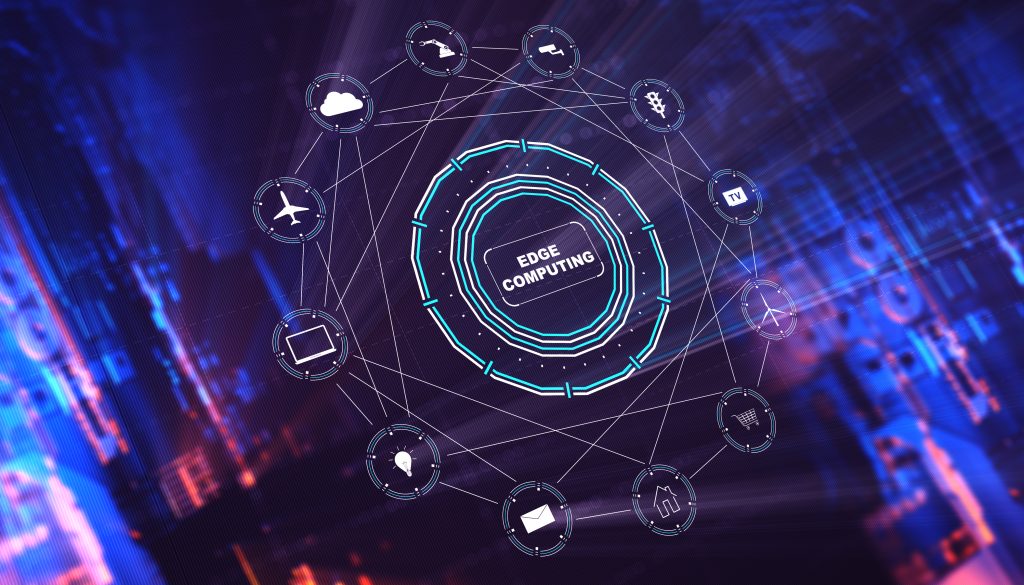Important Considerations for Edge Computing in Modern IT Infrastructures
- ATMECS Content Team
- 3 Minutes Read
- Posted on Apr 24th, 2025
Introduction
Edge computing is a distributed computing paradigm that brings computation and data storage closer to the sources where data is generated, rather than relying on a central data center. By processing data near its source, edge computing reduces latency, conserves bandwidth, and enables real-time analytics and decision-making.
How Does Edge Computing Work?
Edge computing architecture operates on three primary levels:
- Edge Devices: These are the endpoints that generate data, such as IoT sensors, smartphones, connected vehicles, or industrial equipment.
- Edge Nodes: These intermediate computing resources (like gateways, local servers, or micro data centers) process data from multiple edge devices before transmitting relevant information to the cloud.
- Edge Network: The connectivity infrastructure that enables communication between edge devices, edge nodes, and centralized systems.
The workflow typically follows these steps:
- Data is generated at edge devices
- Initial processing occurs at the edge node, including filtering, aggregation, and analysis
- Only relevant data is transmitted to centralized cloud systems
- Time-sensitive decisions happen at the edge, while longer-term analytics occur in the cloud
This distributed approach creates a more efficient data processing model by handling immediate needs locally while still leveraging cloud capabilities for intensive computation.
Edge Computing Use Cases and Examples
Manufacturing and Industry 4.0
- Predictive Maintenance: Equipment sensors continuously monitor machinery health, with edge systems immediately identifying potential failures before they occur
- Quality Control: Computer vision systems on production lines inspect products in real-time, with edge processing enabling instant detection of defects
Retail and Consumer Experience
- Smart Stores: Edge-powered systems enable cashierless checkout, inventory tracking, and personalized in-store experiences
- Interactive Displays: Edge computing powers responsive digital signage that analyzes shopper behavior and adjusts content accordingly
Healthcare and Life Sciences
- Remote Patient Monitoring: Edge devices process vital sign data locally, only alerting healthcare providers when anomalies are detected
- Medical Imaging: Edge computing accelerates image processing for faster diagnoses without transmitting sensitive patient data
Smart Cities and Infrastructure
- Traffic Management: Edge computing enables real-time traffic light optimization based on current conditions
- Public Safety: Edge-powered video analytics help identify security incidents requiring immediate attention
Key Considerations for Edge Computing Implementation
Security and Privacy
- Distributed infrastructure expands the attack surface
- Physical security becomes critical for exposed edge devices
- Data encryption and access controls must extend to edge locations
- Regulatory compliance may require careful data handling across locations
Connectivity and Resilience
- Edge systems must continue functioning during network disruptions
- Intermittent connectivity requires smart synchronization strategies
- Redundancy planning should account for edge node failures
Resource Management
- Limited computing resources require efficient workload prioritization
- Power constraints may affect performance in remote locations
- Storage capacity planning must balance local and cloud resources
Deployment and Management
- Standardized deployment models enable consistent scaling
- Remote management tools are essential for widely distributed systems
- Automated updates and maintenance reduce operational overhead

Benefits of Edge Computing in Modern IT Environments
Organizations implementing thoughtful edge computing strategies can realize significant advantages:
- Reduced operational costs through decreased data transmission and centralized processing requirements
- Enhanced customer experiences via faster application response times
- Improved operational efficiency through real-time data analysis and decision-making
- Greater business continuity with distributed processing capabilities
- Expanded capabilities for AI and machine learning in field operations
How ATMECS Delivers Edge Computing Value
Selecting the right strategy—whether building a product, platform, or focusing on features—depends on several factors:
ATMECS provides end-to-end edge computing solutions that help clients navigate these complexities:
- Strategic Assessment: We identify high-value edge computing opportunities in your specific business context
- Architecture Design: Our experts create resilient edge infrastructures that balance performance, security, and cost
- Implementation and Integration: We seamlessly connect edge systems with existing cloud and on-premises infrastructure
- Ongoing Optimization: We continuously monitor and enhance edge deployments to maximize business value
Conclusion
Edge computing represents a fundamental evolution in IT infrastructure, enabling new capabilities that weren’t possible with centralized models alone. By processing data closer to its source, organizations can achieve lower latency, reduced bandwidth costs, enhanced privacy, and improved operational resilience.
However, successful implementation requires careful planning and expertise to address the unique challenges of distributed computing environments. ATMECS helps organizations navigate this complex landscape, ensuring that edge computing investments deliver meaningful business outcomes.




